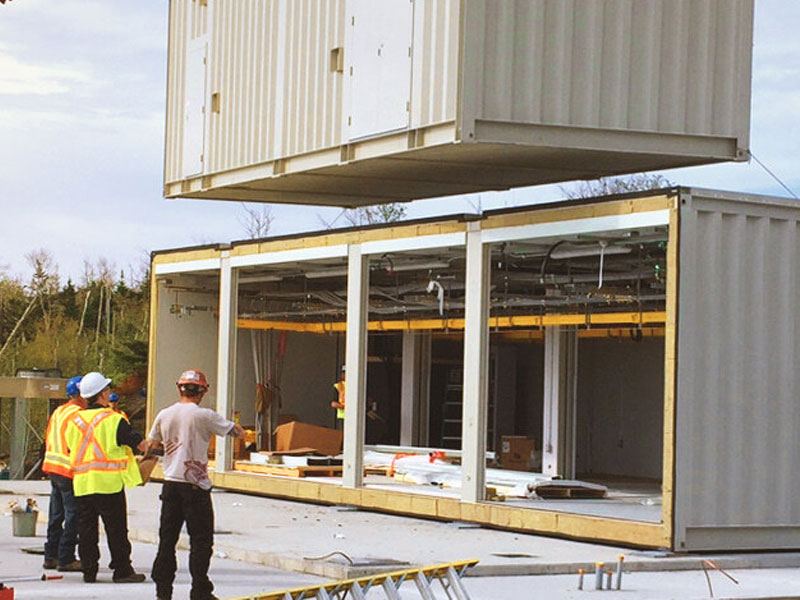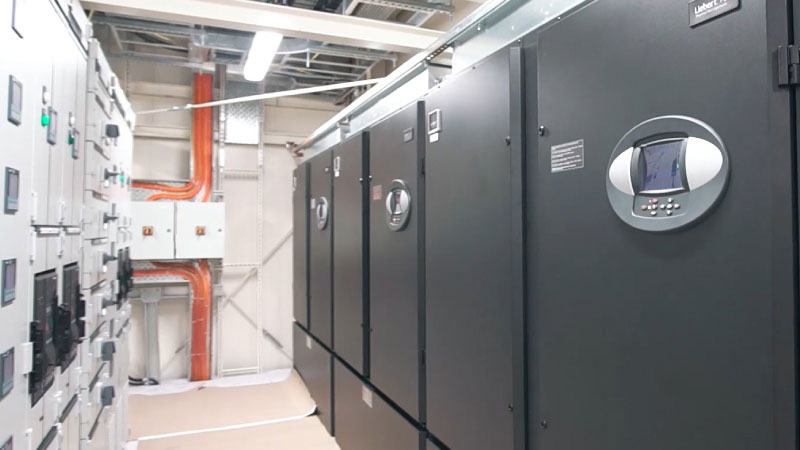We have all probably heard the age-old advice that breaking a big task into smaller parts is the best way to finish it swiftly and successfully.
There is growing evidence that the same principle can create the same benefits for the construction of data centres.
With the need to build bigger data centres and bring new capacity quicker, it was only natural that prefabrication is considered in order to reduce time to market compared to the traditional bricks and mortar approach to building data centres.
Prefabricating building modules, such as power rooms, can integrated on site with the traditionally constructed building shell of the data centre. Prefabricated Modular (PFM) construction can help data centre owners build new data centres faster, cheaper and safer.
It can also help the data centre industry meet provide the digital infrastructure for an increase in digital platforms and data. This trend was accelerated during the pandemic, when lockdowns and work-from-home orders, created an exponential increase in demand for data among consumers and businesses.
Experts predict that increasing demand for data centres is set to continue, helping to support the rollout of fifth-generation mobile networks around the world, plus artificial intelligence (AI) and the exciting but nascent metaverse.
And at a time when data centres are facing increasing government regulation due to concerns about their consumption of energy and water, using PFM to build typically smaller data centres that are better tailored to customers’ needs and reducing waste and carbon emissions in manufacturing and transport makes environmental as well as commercial sense.
Flexible Construction
It should be no surprise, then, that PFMs are now a standard building technique in the data centre industry.
According to research published earlier this year by Omdia, a research and consultancy company, and Vertiv, the use of prefabricated modular data centres is widespread.
More than half (52%) of participants had already used PFMs. That growth is likely to accelerate, the research also indicated.
Nine in ten (93%) of those questioned said that they would use PFMs as their default construction method.
PFM data centres were the main subject in a recent panel discussion I took part in.
The webinar – “Fireside chat: How pre-fabrication can help ease the difficulties surrounding supply chain, costs and quality” – was hosted by DatacenterDynamics, a publisher of news, research and events about the data centre industry.
My other panellists were Jeff Hunter, engineering Director at MiCiM, a project management and construction delivery company specialising in data centres and the discussion’s moderator, Alex Dickins, channel manager at DatacenterDynamics.
Our webinar included the benefits of PFM data centres, including how they can alleviate supply-chain delays, a trend among clients for standardising data centre designs, and the sustainability of PFMs.
In the last few years, PFM data centres have gone from “niche to mainstream”, as Alex put it.
As I brought up in the panel discussion, PFM can reduce project risks, cut construction costs and accelerate speed to market. And given the delays in global supply chains in the last three years, providing predictability of supply has become a competitive advantage.
Supply Chain Challenges (and Opportunities)
Supply chain challenges became more pronounced earlier this year due to the Ukraine war. While still facing growing demand for capacity, the market has faced supply chain challenges.
We have witnessed emphasis on forecasting, as well as a rise in standardisation (defining standard designs/ building blocks) between datacentre owners and manufacturers in the market.
For our part, Vertiv retains products until they meet the expiration date. This is done to make sure that Vertiv meets the product high demands from clients in a timely manner.
Meanwhile, data centres are getting bigger, and therefore more complex. Can PFM maintain quality and quantity?
Spoiler alert: they can. According to Jeff, the key to success is a thorough vetting of your suppliers and to “take the complexity” out of construction.
Consider your suppliers’ suppliers. After all, suppliers have supply chains of their own to manage. Can they all manufacture, for example, enough power generators in time for your project?
Minimising the amount of hardware and components in a data centre build can also help you control costs and help your project run on time.
By way of example, Jeff said that his company helped one client pair back its data centre design from approximately eight hundred pieces of electrical “switchgears” to 180 pieces, saving the client tens of millions of euros.
The Case for Standardisation
Standardisation of data centre designs and equipment is another way for data centre builders to smooth any bumps in global supply chains.
More of our clients are standardising PFM data centre designs. They are also requiring their suppliers to guarantee and reduce project lead times and minimise project risks.
In some cases, they will use Vertiv to manage the many suppliers involved in building a large and complex data centre project.
That is something we did recently for MEEZA − a privately held joint venture with Qatar Foundation. We helped it build a prefabricated five-megawatt data centre in just 14 months, during the pandemic.
PFM has additional benefits. Factory-based projects can be far less labour intensive, requiring, say, half a dozen staff compared to one hundred staff for a large, on-site data centre build.
Of course, each data centre is different, no matter how much you standardise designs and components. In my experience, however, PFM data centres are typically built far faster than those built on site.
That includes “white space” fit outs.
Developed and Developing Markets
In developing data centre markets, PFM is often an ideal option because it’s typically significantly faster and higher in quality compared to on-site construction.
In more mature markets, PFMs still have these benefits, but the quality benefits are usually smaller considering more developed construction sector.
In these markets a hybrid model of conduction − some construction in a factory and some onsite − makes more sense. In this scenario, modular building blocks help customers greatly reduce complexity and risks in carrying out the project.
Sustainability
How much, if at all, does PFM reduce carbon emissions compared to traditional data centre construction?
Industry research has suggested that prefabricated construction has a reduced carbon footprint compared to traditional construction of data centres. Some of this carbon saving is from worker transport. Fewer workers are needed to build a data centre at a factory compared to on-site construction.
You can learn more about this in our white paper about prefabricated modular data centres. As prefabricated modular data centres continue to gain traction, data centre builders need to find new ways to minimise supply chain disruption, rising inflation, worker shortages and possible recession.
PFM can help data centre builders overcome all of these challenges.
It isn’t perfect, of course. As Jeff noted in our panel discussion, the industry hasn’t managed to “join all the dots together”. There should be further standardisation and simplification. Still, we agreed that the PFM market has a bright future.
That is why Vertiv is expanding its prefabricated products and services, including large prefabricated modular data centres, such as this lab developed for Orange, compact, fully-contained edge data centres that run on our Vertiv™ SmartMod and Vertiv™ SmartRow platforms, and high-density, power modules.
Watch the full DCD session on demand today.






